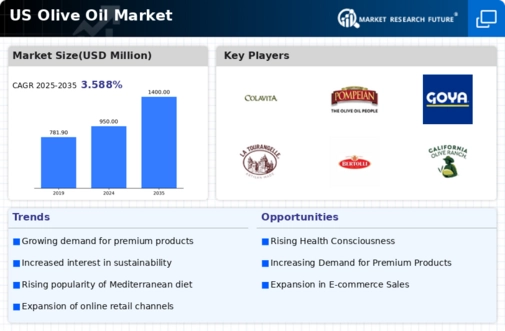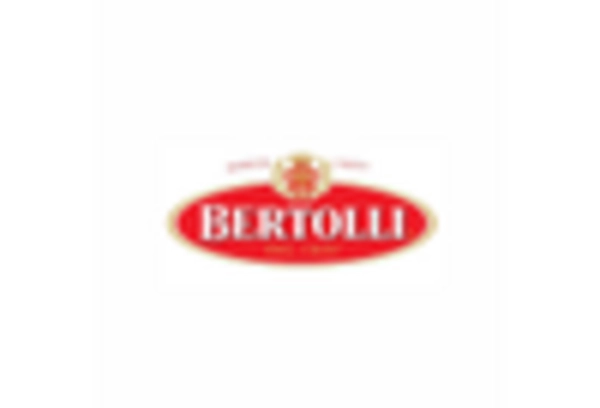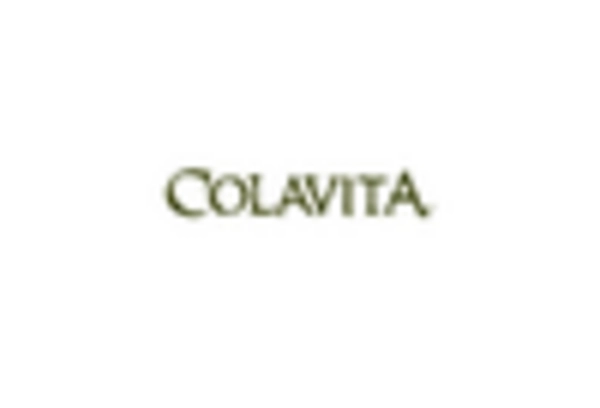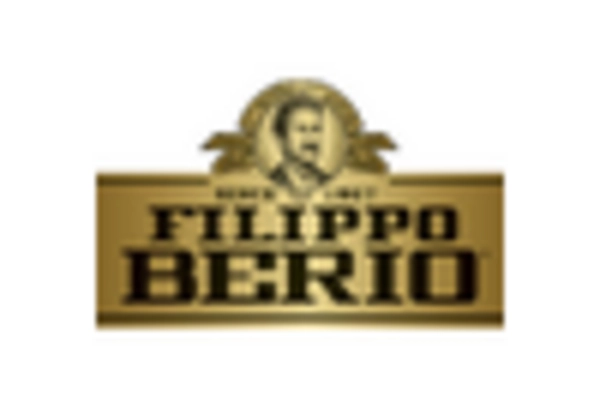Health Benefits Awareness
The olive oil market is significantly influenced by the increasing awareness of health benefits associated with olive oil consumption. Research indicates that olive oil, particularly extra virgin varieties, is rich in monounsaturated fats and antioxidants, which are linked to various health benefits, including heart health and anti-inflammatory properties. As consumers become more health-conscious, the demand for olive oil is likely to rise, with many individuals incorporating it into their daily diets. This trend is reflected in the olive oil market, where health claims and nutritional benefits are becoming central to marketing strategies. The potential for olive oil to contribute to a healthier lifestyle is expected to drive further growth in the market.
Increased Culinary Interest
The olive oil market is benefiting from a surge in culinary interest among consumers, particularly in the United States. Cooking shows, social media influencers, and food blogs are promoting the use of olive oil as a staple ingredient, which has led to a rise in home cooking and gourmet food preparation. This trend is supported by data indicating that olive oil consumption in the US has increased by approximately 10% over the past few years. As consumers seek to enhance their culinary experiences, the olive oil market is likely to see sustained growth, with an emphasis on diverse applications ranging from salad dressings to cooking oils. This growing culinary interest is expected to further solidify olive oil's position as a key ingredient in American kitchens.
Rising Demand for Premium Products
The olive oil market is experiencing a notable shift towards premium and extra virgin olive oils, driven by consumer preferences for higher quality and authenticity. This trend is reflected in the increasing sales of premium olive oils, which have seen a growth rate of approximately 15% annually. Consumers are becoming more discerning, often willing to pay a premium for products that are organic, cold-pressed, or sourced from specific regions. This demand for premium products is reshaping the olive oil market, as brands strive to differentiate themselves through quality and unique flavor profiles. The emphasis on quality over quantity is likely to continue influencing purchasing decisions, thereby impacting the overall dynamics of the olive oil market.
Innovations in Packaging and Distribution
The olive oil market is witnessing innovations in packaging and distribution methods, which are enhancing product accessibility and consumer engagement. Brands are increasingly adopting eco-friendly packaging solutions, such as glass bottles and recyclable materials, to appeal to environmentally conscious consumers. Additionally, advancements in distribution channels, including online sales and subscription services, are making it easier for consumers to access a variety of olive oil products. This shift is likely to expand the customer base and increase overall sales within the olive oil market. As convenience becomes a priority for consumers, the ability to purchase high-quality olive oil through diverse channels is expected to play a crucial role in shaping market dynamics.
Cultural Influence and Culinary Traditions
The olive oil market is significantly shaped by cultural influences and culinary traditions, particularly in regions with strong Mediterranean ties. As the popularity of Mediterranean diets continues to rise in the US, consumers are increasingly incorporating olive oil into their daily meals. This cultural shift is supported by data showing that Mediterranean diet adherence has grown by approximately 20% among health-conscious consumers. The olive oil market is likely to benefit from this trend, as traditional uses of olive oil in cooking and food preparation become more mainstream. The integration of olive oil into various cuisines not only enhances flavor but also promotes its health benefits, further solidifying its role in American culinary practices.

















Leave a Comment